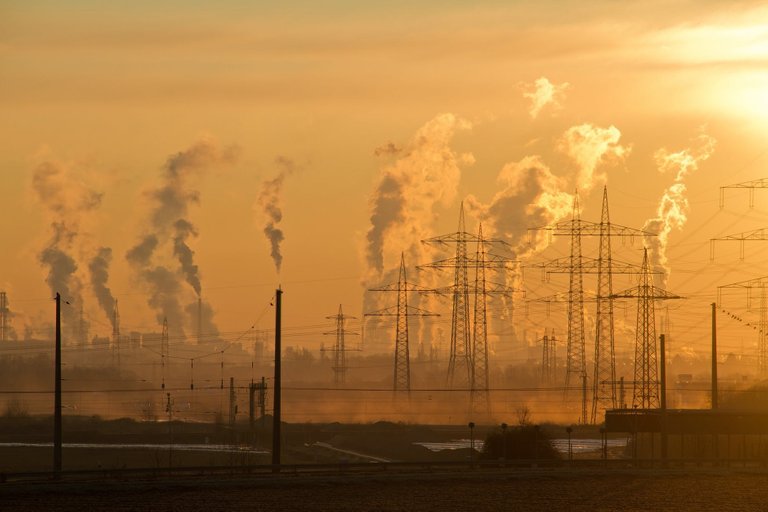It cannot be denied that climate change is the biggest challenge facing the global society at present and it has become a major necessity in the present time. Statistics show that the average surface temperature of the Earth's surface has risen by about 1.62 degrees Fahrenheit (ie about 0.9 degrees Celsius) since the late 19th century. Apart from this, sea level has also increased by about 8 inches since last century. Statistics make it clear that this is the time to seriously consider climate change.

Source
Scientists suggest how to achieve the goal of global warming
A study says that if developed countries stop wasting food and developing countries give up cutting of forests, the target of increasing the temperature by 1.5 ° C by 2050 can be achieved
If every fifth person living in developed countries adopts vegetarianism, and if they waste at least one third of the food they are currently wasting, while developing countries conserve their forests and restore the wastelands If successful, by 2050 the agricultural sector in the world will start absorbing carbon dioxide instead. With the help of which changes in climate can be dealt with and the target of 1.5 ° C can be achieved.
Better management of agricultural land and forests is important from the perspective of climate. With this, global emissions can be reduced by up to a third, which can play an important role in tackling climate change.
According to the researchers, many countries such as Brazil, India, China and Indonesia have immense potential to reduce the emission of greenhouse gases, if their governments stop the indiscriminate harvesting of forests and change the agricultural practices harmful to the environment. Can be limited to a great extent. Also, if by 2030 the developed country changes its diet and only one out of every five people feeds on the food they get from plants, it will increase the chances of avoiding the harmful effects of climate change.
Currently, about a quarter of the global emissions are due to land. Brazil, China, Indonesia, the European Union, India, Russia, Mexico, the United States, Australia and Colombia jointly account for 54% of the global land area emissions. Significantly, the land area includes agricultural land, forest and other land use. Together, they emit 10 to 12 gigatons of carbon dioxide globally every year. Which is equivalent to 25 per cent of the net greenhouse gases emitted by humans.

Source
About half of which is emitted from agriculture and half by land use and its transformation and forests. Therefore, if we have to achieve the target of 1.5 ° C of the Paris Agreement, then it becomes very important to reduce it. If proper management is done, trees and plants can absorb huge amounts of carbon dioxide through photosynthesis.
It is possible to cut emissions by 50 percent every decade
Researchers have created a comprehensive framework for how to use the land appropriately to deal with climate change, with the help of limiting the emissions from land area by 2040. Stephanie Rowe, an environmental scientist at the University of Virginia and the lead researcher of the study, stated that "we have created a roadmap that can help reduce emissions from land area by about 50 percent every decade, as well as from 2030 The carbon adsorption speed of the ground can be increased ten times between 2050 ".
Researchers have investigated two dozen cases related to climate models and land management, which have stopped emissions as well as benefited society and the environment. He has then prepared a roadmap for how more countries at the global level can reduce their emissions by adopting these methods. He is the first to ban the cutting of forests.
There is a need to reduce deforestation by 70 percent in Brazil, Indonesia and the Congo Basin of Africa by 2030 to combat global warming. The second most important step is to improve the agriculture sector. By improving farming practices, under which promoting organic farming as well as better management of soil can reduce carbon dioxide equivalent to India's annual emissions every year.

Source
Countries will have to improve forest management by afforestation on agricultural land, with the help of which greenhouse gases can be reduced every year equal to the total annual emissions of the European Union. Also, by 2030, the wastage and loss of food items should be cut by 30 percent. According to him, the total emission from the land should be cut by 85 percent and by the middle of the century, the carbon absorption capacity of the land should be increased by 10 times. According to Professor Rowe
"The work ahead is challenging, but we have all the necessary tools and knowledge to implement it right now."
It would not be enough to cut emissions from vehicles, industries and power plants alone to control the rising temperature. Changes in agricultural practices, soil and forest are also very important for this. It is also understood that how global warming can be limited in the world by meeting the food needs of 1000 crore people by 2050. It is clear that land is an important resource, which not only It is capable of feeding billions of people, but can also play an important role in tackling climate change.
!sources
When posting content that either is owned by someone else or inspired by someone else’s works, it is proper to list the said source in your post with a link to the original.
Failing to do so is considered plagiarism, and could result in being blacklisted by curation groups or even flagged.
Examples include:
If you understand the rules explained in this comment reply to this comment with "I understand"
I understand.